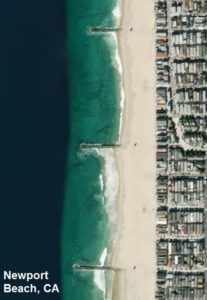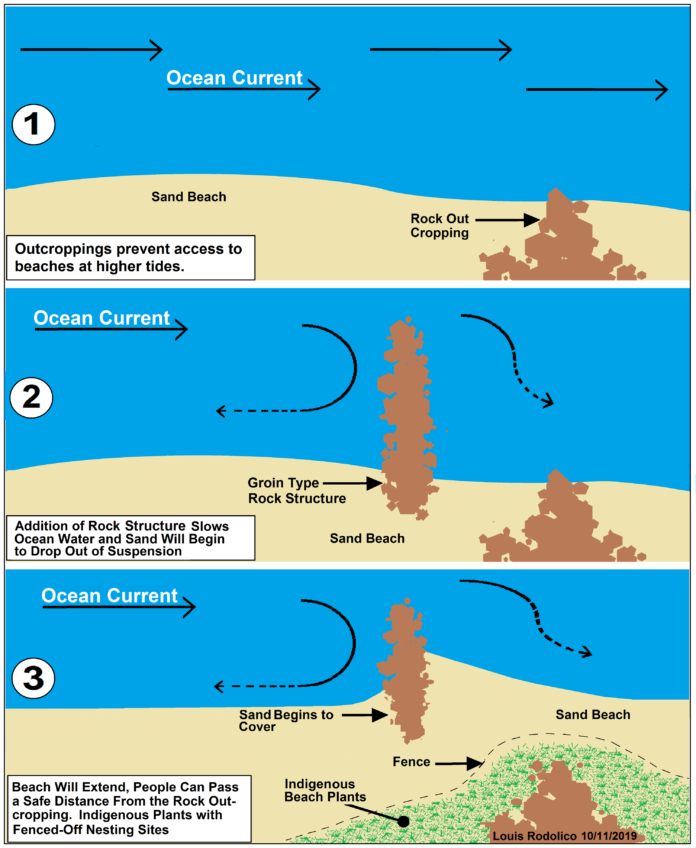Commentary
This 10/12/2019 revision reflects public comments.
Groins and other structures are used all over the world to prevent beach erosion. The principal is simple; they reduce ocean water velocity. The slower water is less turbulent, the net result being that suspended particles in the water, like sand, are more likely to be deposited on the ocean floor. Over time these structures gradually raise the level of a beach. The illustration shows a groin structure which is perpendicular to the beach. Breakwaters and jetties are different see: https://www.beachapedia.org/Shoreline_Structures
 Today’s rising oceans are forcing us to look at all possibilities when it comes to coastal management. The recent tragic bluff collapses and ongoing bluff erosion affecting properties and the Coaster Line are warning us that it is time to act.
Today’s rising oceans are forcing us to look at all possibilities when it comes to coastal management. The recent tragic bluff collapses and ongoing bluff erosion affecting properties and the Coaster Line are warning us that it is time to act.
Groins can be made of; rocks, boulders, wood, concrete and other materials. The attached illustration shows the basic groin process. The addition of a groin structure slows down the lateral ocean current. Over time sand begins to build up. When engineered properly these structures can raise beach levels several feet. When this happens the base of bluffs will be less exposed to waves and therefore less likely to erode and collapse. Once the sand levels are raised to a certain point used Christmas trees can be deposited on the beach near the bottom of the bluffs. The tree branches slow down the sand bearing winter wind eventually burying the trees in an elevated sand mound. These elevated mounds can become platforms for indigenous beach plants and nesting sites for birds. A wood slat sand fence can keep beachgoers out of the plant area and away from future bluff collapses.
With these structures houses at the beach will experience higher summer sand levels year round. However they will have to negotiate consolidated diagonal paths through the plant/dune line. A groin at La Jolla Shores Park could segregate swimmers and surfers
There would need to be an Environmental Impact Report. Conservancy groups may not like altering the ocean floor but the addition of dune nesting sites is a big plus for the natural environment.
I have seen these structures work firsthand. One vacation community saw the ocean reaching the beachfront road at high tide and there was little or no beach to go too, they called in the Corp of Engineers, who designed and installed 100 plus yard long granite groins into the ocean. It cost millions but in a few years the elevated beach was the length of a football field even at high tide. Used Christmas trees captured more windborne sand, now there is about 40 yards of beach plants on elevated dunes. Today the biggest vacationer’s complaint is how far they have to carry all their stuff to get to the ocean.
The California Coastal Commission may not be looking for that dramatic a change, but it is time to consider an investment in these types of structures.
Louis Rodolico has been a resident of University since 2001 and is a candidate for D-1 City Council louisrodolico.com




